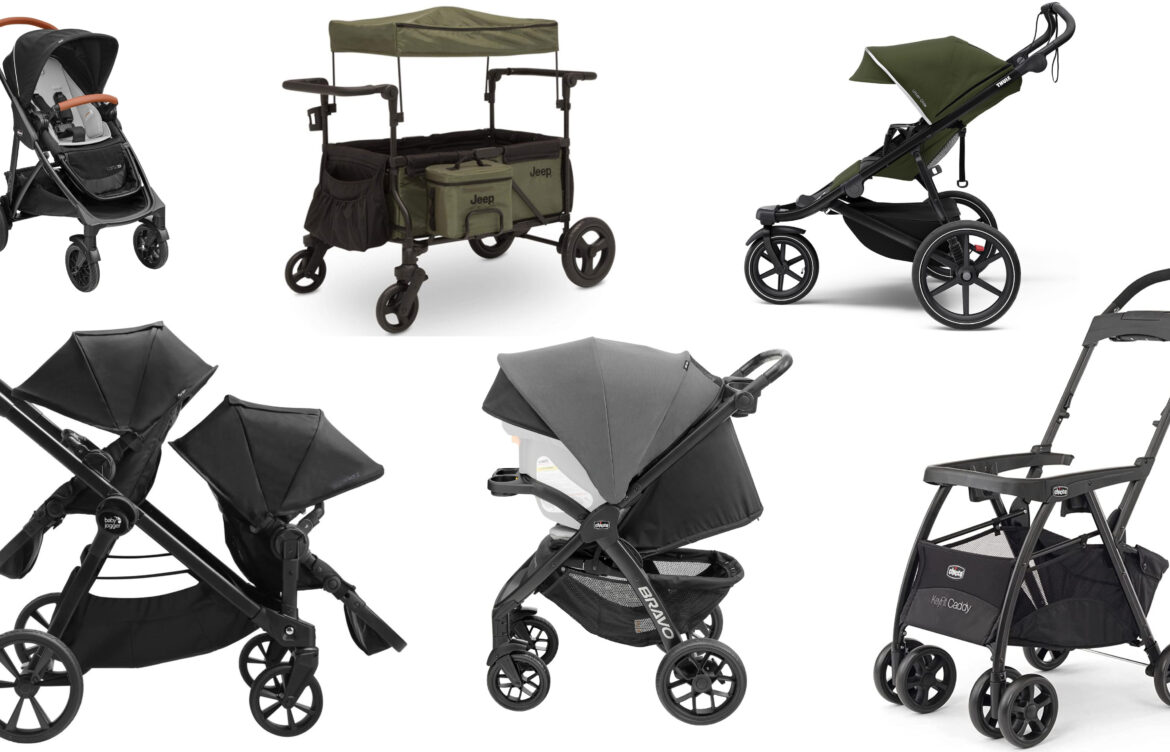
Types of Strollers
Are you knee-deep in your stroller shopping journey and still don’t know which model to buy? I hear you!
Shopping for a stroller, while might seem easy, is far from. You pass by various types that seem to perform well, but you don’t know which one to buy. Do you get the sleek stroller that screams luxury and looks like it belongs in a Vogue magazine? Or do you get the heavy-duty, all-terrain one that stirs up the adventurer in you?
Because I know the dilemma, I’ve decided to help you by preparing this guide. I’ll tell you all you need to know about the different types of strollers and which one is the best fit for your lifestyle, so let’s jump in!
6 Different Types of Strollers and Their Pros and Cons
Strollers come in six main types that you’ll see frequently during shopping, full-sized, double, umbrella, jogging, car seat carriers, and travel systems. Here’s a detailed breakdown of them and their perfect target audience.
1. Full-Sized Stroller
Full-sized strollers are the jack of all trades in the baby market. They’re the standard type of strollers that was created to fit all needs, not for a specific purpose, which makes them suitable for leisure walk lovers, adventurous souls, stay-at-home parents, and more.
These strollers come in the basic stroller design that you see every day, and they’re designed to be sturdy and durable enough to last for years. Most of them come with comfortable padded seats and retractable canopies and are compatible with car seats.

From my experience as a mother, I think you should get a full-sized stroller no matter what your needs are as a parent. Even if you need one of the other types, it should be your second. Your first should always be full-sized because it’s the most durable and practical type out there.
Pros:
- Suitable for ages 0 to 5 years
- Foldable and can fit in your car trunk
- Available in many prices, suitable for every parent’s budget
- Compatible with bassinets and car seats
- Most of them come with luxurious features, like snack trays, cup holders, and storage bags
Cons:
- They’re bulkier than most of the other types, which boosts their durability but makes it challenging to store them
- Impractical for traveling around because of their heavy weight
2. Double Stroller
Double strollers consist of two full-sized strollers lying side by side or in a tandem fashion, with one behind the other. They’re a lifesaver for parents with twins or closely-aged siblings, as both kids can ride at the same time. Instead of pushing two strollers, you’ll only push one.
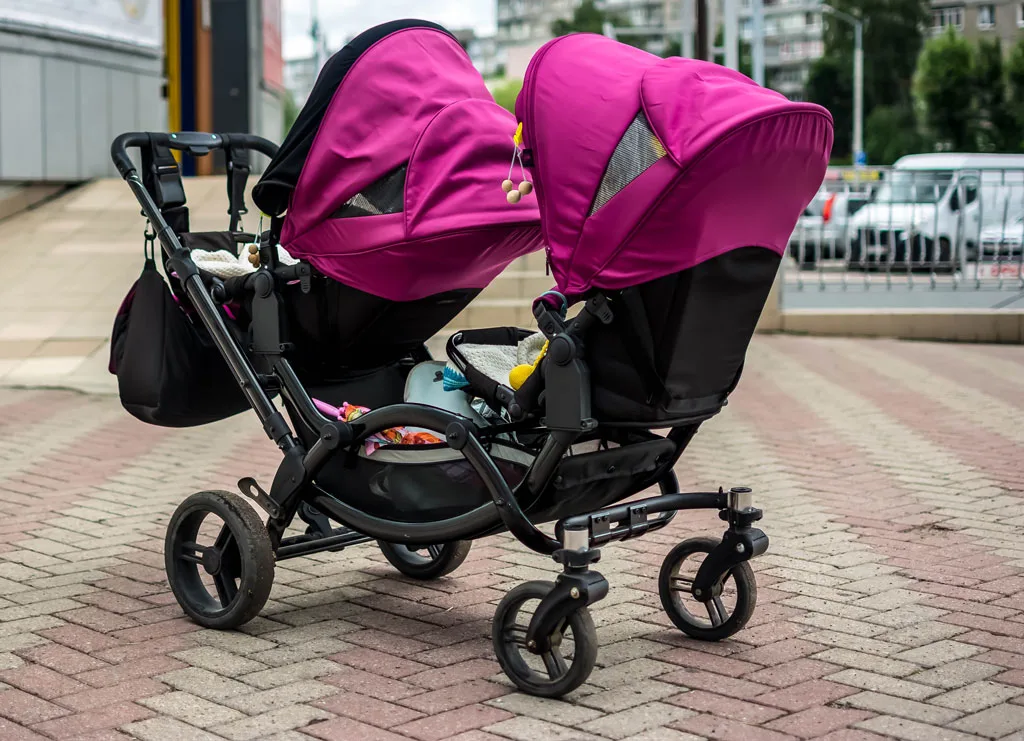
Suppose you have a newborn and a toddler, and the older sibling won’t let go of their stroller just yet. A double-stroller will be your best bet to go out and move around with your kids comfortably. It’s also the safer option. Moving around with one stroller instead of two means you’ll be more focused and ready in case of an accident or a slip.
While I agree with the necessity of double strollers, I also think they don’t come without cons, as with any other type.
Pros:
- Available in many options regarding seating arrangements (side-by-side and tandem)
- Have bigger storage spaces than single strollers
- Suitable for ages 0 to 5 years
- Compatible with bassinets and car seats
- More affordable than buying two single strollers
Cons:
- Challenging to maneuver in narrow places because of their size
- Can be bulky, even after folding
3. Umbrella Stroller
Umbrella strollers are also known as lightweight strollers, and their selling point is that they’re lighter than their counterparts, full-sized strollers. To put things into perspective, full-sized strollers are often 25 pounds or heavier, while umbrella strollers average below 15 pounds.
These strollers are a perfect fit for adventure seekers and traveling parents. They’re easier to pack and take onto a flight than regular strollers. Also, they’re a breeze to push around and fold, thanks to their compact designs and small sizes.
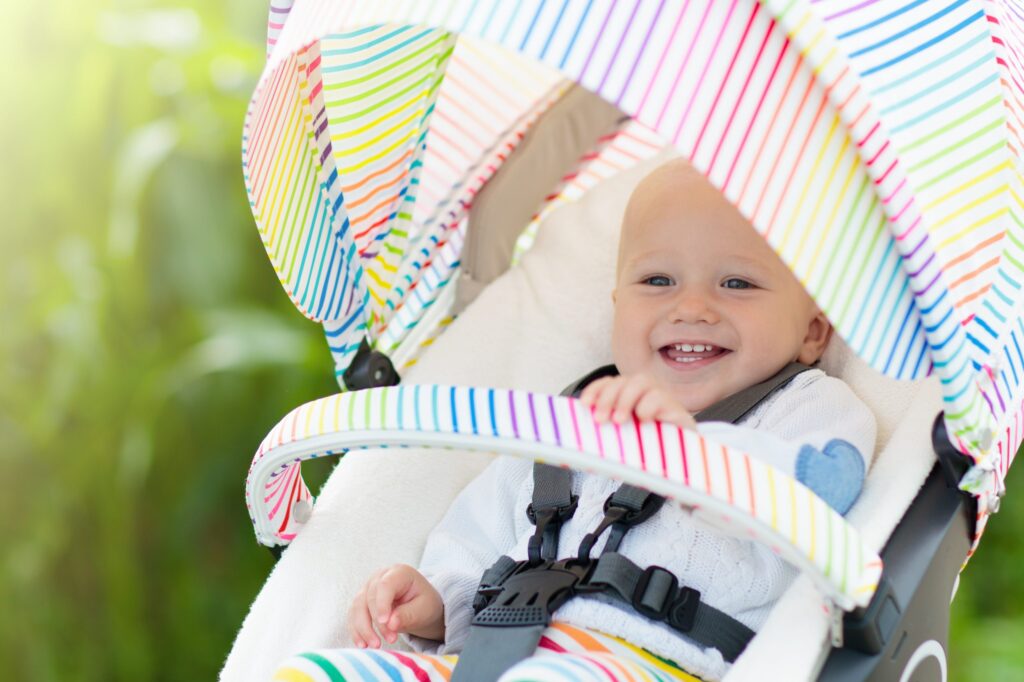
That said, there’s a huge catch with using an umbrella stroller. It’s only suitable for use from the age of 6 months because its seat doesn’t recline, so it’s only suitable for babies who can hold their heads up. That’s why you can’t buy it as your main stroller. Ideally, you should get a full-sized stroller for the first few months of your baby’s life and then get an umbrella when it’s fit.
Pros:
- More affordable than standard single and double strollers
- Can fit anywhere when folded because of their compact designs
- Easier to maneuver and move than the other stroller types
- Most of them come with convenient features, like retractable canopies, cup holders, adjustable handles, and more.
Cons:
- Come with small storage spaces
- Not as stable over different terrains as other heavier strollers
4. Jogging Stroller
Jogging strollers are designed to withstand fast rolling and bumps on different terrains, making them ideal for taking on runs and jogs. They’re a dream come true for athletic parents who had to sacrifice some of their jogging freedom after they had their babies. Now, they can take their little bundles of joy with them on their morning runs!
These strollers usually have larger wheels than usual to be more stable on the ground, thus providing more safety over rough terrains and at high speeds. Although I’m not a jogger, I can certainly see why they’re a favorite for many parents.
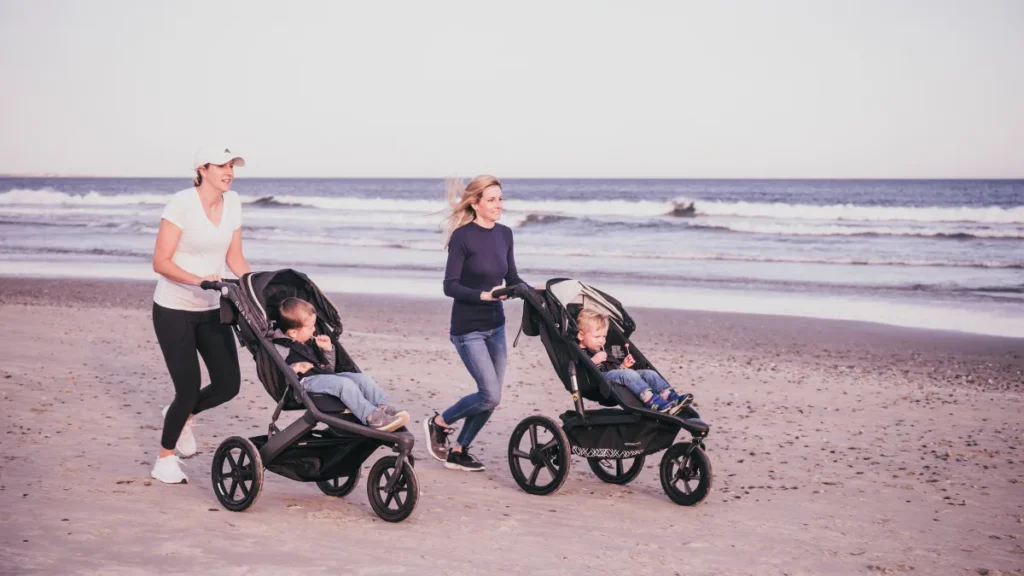
Having said that, you should know that jogging strollers are only suitable for babies 6 months and older, which means you can’t use them on their own from day one. Like with umbrella strollers, you should buy a regular-sized stroller for your everyday errands and get a jogging stroller once your baby hits the age mark.
Pros:
- Give mothers a chance to regain their pre-pregnancy body without leaving their babies at home
- Come with storage spaces where you can put your water bottle and other personal items while running
- Sturdier and more durable than regular strollers because of their heavy-duty build
- Come in a variety of prices to fit every budget
Cons:
- Bulkier and heavier than regular strollers, even when folded
- Tires need regular replacements
5. Car Seat Carrier
Car seat carriers are frames that come without a regular stroller seat. They’re compatible with both stroller seats and infant car seats, giving you the choice to connect either option to them. Suppose your baby is sleeping in their car seat, and you don’t want to disturb them. You can connect the entire seat to the frame and push it around like a stroller.
They’re appealing to many parents because of their affordable prices and small practical sizes. However, I’m not a big fan, and I’ll tell you why.
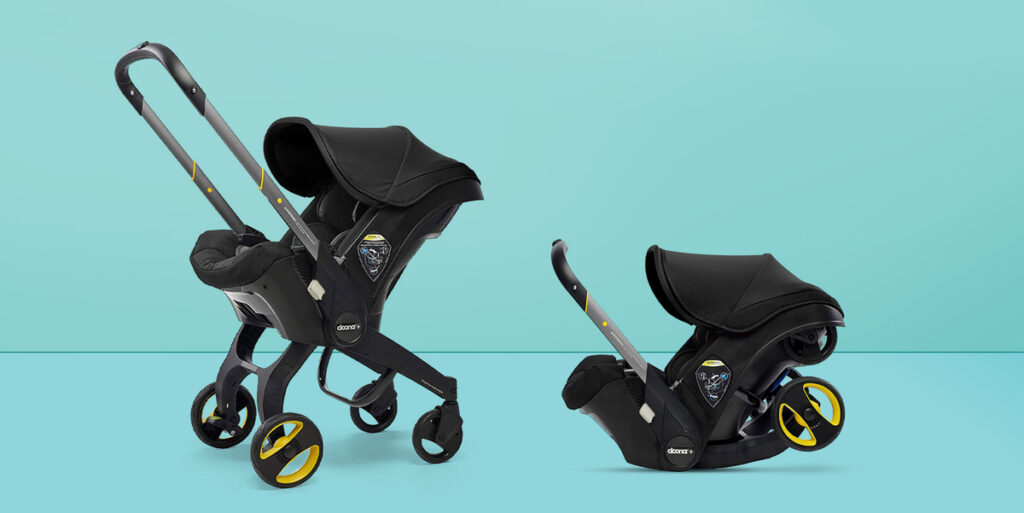
Car seat carriers are often shorter and smaller than regular strollers, making it inconvenient to push them around all day, as you’ll have to bend slightly to reach them. Also, they’re less durable than your average stroller, given that they’re meant for more delicate use.
They’re a decent choice for parents who go out all the time and don’t want to be dealing with a stroller and a car seat all day since they’ll only have to manage one baby vehicle. Nonetheless, you can’t depend on a car seat carrier solely because it won’t last more than a couple of years with you.
Pros:
- Lighter and smaller than full-sized strollers
- More affordable than all of the other types
- Suitable for ages 0 to 5 years
- Easy to carry on public transportation like trains, airplanes, etc
Cons:
- Rarely come with convenient features like retractable canopies, cup holders, snack trays, and more
- Babies shouldn’t sit in their car seats for more than two hours at a time, which gives you a limited time window to use your car seat carrier
6. Travel System
Travel systems aren’t a type of strollers per se. Instead, they’re a package of a stroller and a car seat that are compatible with the same frame. They’re a more convenient buy than regular strollers because instead of shopping for a stroller and a car seat separately, you’ll get them both at once.
The reason travel systems are appealing to many parents is that they often come at discounted prices since they’re sold as a package. However, this point is a double-edged sword because many travel systems are lower in quality than separate strollers and car seats, thanks to their lowered prices.
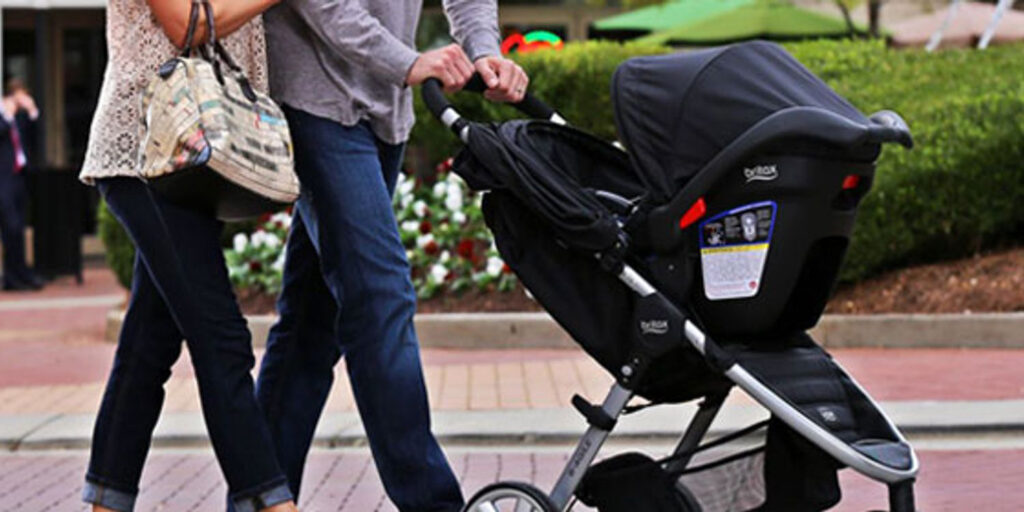
If you want my opinion, I think travel systems are pretty convenient, and buying them is time-efficient for many parents. Plus, they’re the only type on my list that can replace a full-sized stroller.
Pros:
- Ideal for moving around with a sleeping baby, as you can attach the car seat to the frame without waking your little one up
- Suitable for ages 0 to 5 years
- Sturdy and durable enough to last for years
- Come with many luxurious features, like storage spaces, lunch trays, cup holders, and more
Cons:
- Heavier than standard strollers, making it challenging to carry them around
- Bulky, even after folding
Essential Features to Look for in a Stroller
Having bought strollers before, I know how easy it is to forget an essential feature while shopping. To help you choose the best stroller for you, I’ll give you a list of the most important features that you should keep in mind.
Retractable Canopies
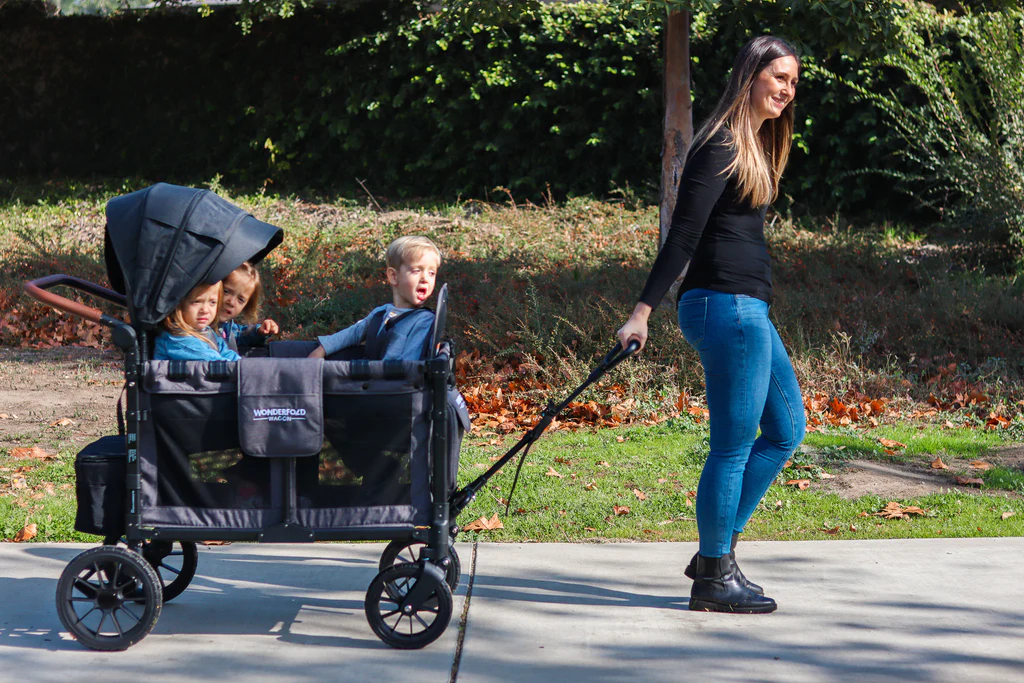
A retractable canopy gives you much-needed freedom while strolling with your baby. You can close it and protect your baby from the sun and rain, or you can open it and introduce your little one to the beauty of the world outside. It’s definitely a feature you’ll miss if you don’t get it.
Easily Accessible Brakes
For maximum safety, strollers should have easily accessible brakes that you can press in less than a second. Now, easy access is different for each parent. Some parents prefer foot brakes, while some feel safer with hand brakes. Before buying a stroller, you should test its brakes and check that they’re convenient for you.
Dimensions
If you have limited storage space in your house, you need to measure a stroller’s dimensions before buying it. Believe me, you don’t want to deal with the inconvenience of having a stroller too big for storing, even after folding.
Washable Parts
Some strollers come with removable fabrics that can be washed in the machine and reattached, which is an extremely convenient feature. The alternative is scrubbing the fabrics in place and leaving the stroller in a sunny place to dry.
You can imagine the inconvenience of handwashing and waiting for at least a day to use it again, as opposed to hanging it to dry and only waiting a few hours.
Folding Mechanism
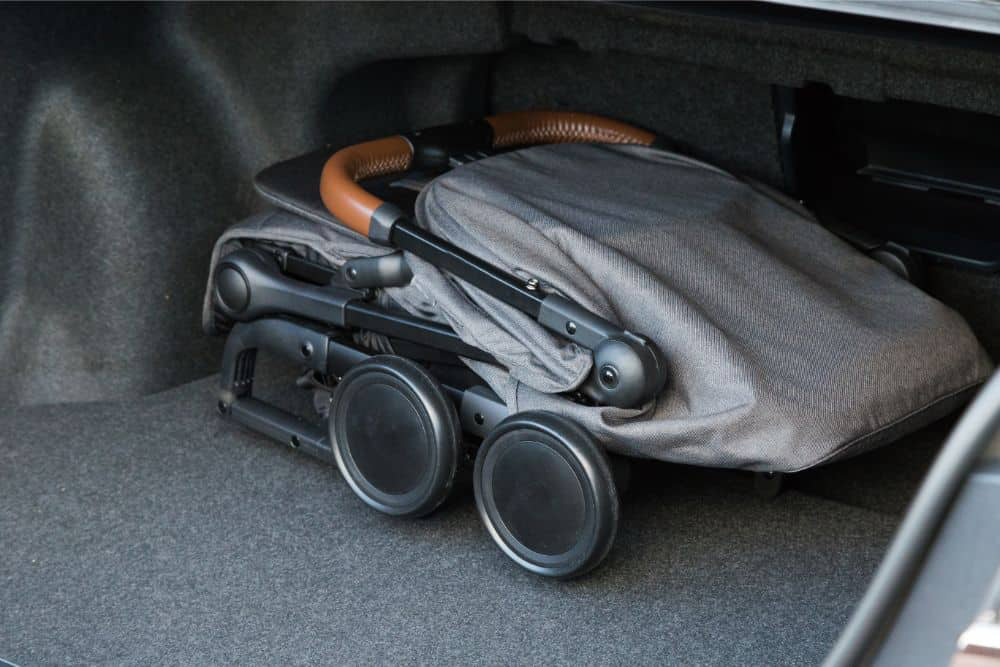
Most of the time, you’ll be folding your stroller while carrying your baby in one hand, so the folding mechanism should be easy enough to do with the other one. I once had a stroller that needed both hands to fold, and I couldn’t regret it more. If you appreciate this convenience, you should check this feature before taking a stroller home.
Safety Harness
Most strollers come with five-point safety harnesses, which is the safest option out there. However, some models come with three harness points only, which children can wiggle out of once they’re old enough. Since safety is every parent’s top priority, you should check the harness of any stroller before buying it.
To Wrap Up
Strollers come in many types, each one serving a specific purpose. If you’re looking for everyday use and want a reliable stroller that can last for years, you can buy a full-sized stroller, a double stroller, or a travel system. Meanwhile, jogging strollers are the way to go if you’re an athlete, and lightweight strollers are your best bet if you travel a lot.
After choosing the type that fits your lifestyle the most, you should check that the model you’re buying has all the features you need. And that’s it!